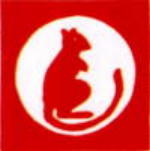Corgi CC60604 British Cromwell Mk. VI Tank - 'B' Squadron, 5th Royal Tank Regiment, 7th Armoured Division, Holland, 1945 (1:50 Scale)
"Victory at all costs, victory in spite of all terror, victory however long and hard the road may be; for without victory there is no survival."
- British Prime Minister Winston Churchill
 The Cromwell tank was used by the British Army during the later stages of World War II. The Cromwell was ordered in 1941 and intended to replace the lightweight Crusader "cruiser" tank by being more heavily armoured, and, it was hoped, more survivable in battle. Its greater weight was to be driven by a 600-horsepower Rolls Royce Meteor engine, a derivative of Rolls Royce's line of aircraft engines. Initial models, however, were powered by other engines and were designated Cavaliers and Centaurs when they entered service in mid-1942. The first genuine Cromwells with Meteor engines entered service in early 1943.
The Cromwell tank was used by the British Army during the later stages of World War II. The Cromwell was ordered in 1941 and intended to replace the lightweight Crusader "cruiser" tank by being more heavily armoured, and, it was hoped, more survivable in battle. Its greater weight was to be driven by a 600-horsepower Rolls Royce Meteor engine, a derivative of Rolls Royce's line of aircraft engines. Initial models, however, were powered by other engines and were designated Cavaliers and Centaurs when they entered service in mid-1942. The first genuine Cromwells with Meteor engines entered service in early 1943.
The Cromwell tank weighed about 27 tons and had a top speed of 38 miles per hour and a range of between 80 and 170 miles, depending on the terrain. It was initially armed with a 75mm gun and two 7.92mm machine guns. The Cromwell's main assets were its speed, maneuverability, and ease of repair. It first entered battle in large numbers in mid-1944, during the Normandy Invasion and the ensuing campaign across northern France. From Normandy on, Cromwells and American Sherman tanks formed the backbone of British armored divisions. Like the Shermans, however, most Cromwells were outgunned by the more powerful German Panther and Tiger tanks. Cromwell tanks served in British armies until the war ended in Europe in mid-1945.
This particular British Cromwell Mk. IV Cruiser Tank was attached to 'B' Squadron, 5th Royal Tank Regiment, 7th Armoured Division during its advance through Holland in late 1944/'45.
Sold Out!
Dimensions:
Length: 5-inches
Width: 2-inches
Release Date: October 2004
 Historical Account: "Gerboa" - Tank regiments in the 22nd Armoured Brigade were equipped, in the main, with British cruiser tanks including Cromwell Mk VI close support tanks with 95mm howitzer. This particular tank had an additional stowage box added to the turret side and the so-called Normandy Cowl deflector at the back. Those regiments involved in Operation Blackcock were also given a coat of whitewash over the normal olive drab colour. The various tactical signs should have been left visible, although this tended to defeat the purpose of the camouflage and was often ignored. Operation Blackcock was mounted in January 1945 in order to clear a pocket of land between the rivers Maas and Roer.
Historical Account: "Gerboa" - Tank regiments in the 22nd Armoured Brigade were equipped, in the main, with British cruiser tanks including Cromwell Mk VI close support tanks with 95mm howitzer. This particular tank had an additional stowage box added to the turret side and the so-called Normandy Cowl deflector at the back. Those regiments involved in Operation Blackcock were also given a coat of whitewash over the normal olive drab colour. The various tactical signs should have been left visible, although this tended to defeat the purpose of the camouflage and was often ignored. Operation Blackcock was mounted in January 1945 in order to clear a pocket of land between the rivers Maas and Roer.






![Cyber Hobby German Sd. Kfz. 142/2 Sturmhaubitze '42 Ausf. G Assault Gun - "Red 55", Panzer Regiment Hermann Goring, Italy, 1944 [With Foliage] (1:72 Scale)](http://cdn4.volusion.store/qh9e9-jdqv9/v/vspfiles/photos/DRR63278-1.jpg?v-cache=1740197136)


